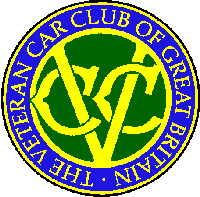
The London to Brighton Run
From The Veteran Car Club of Great
Britain
 Saturday
14 November 1896 was a red-letter day in the history of British motoring: the
Emancipation Run' from London to Brighton celebrated the passing into law of the
Locomotives on the Highway Act, which raised the speed limit for 'light
locomotives' from 4 miles per hour to 14 mph and abolished the requirement to be
preceded by a man on foot.
Saturday
14 November 1896 was a red-letter day in the history of British motoring: the
Emancipation Run' from London to Brighton celebrated the passing into law of the
Locomotives on the Highway Act, which raised the speed limit for 'light
locomotives' from 4 miles per hour to 14 mph and abolished the requirement to be
preceded by a man on foot.
The need for the man on foot to carry a red flag had actually been abolished in 1878, but the Locomotive Act was still widely known as the 'Red Flag Act' and a red flag was symbolically destroyed by Lord Winchilsea at the start of the 1896 Run.
The 1896 event was a demonstration that the automobile had come to stay. The organisers' instructions stated: "Owners and drivers should remember that motor cars are on trial in England and that any rashness or carelessness might injure the industry in this country."
 Only 14 of the 33 starters reached Brighton, although it was hinted that one car
was taken by train and covered with mud before crossing the finishing line! Not
all early Runs were to Brighton: Richmond, Southsea and Oxford were among the
destinations. In 1930, the Royal Automobile Club - as Britain's senior motoring
club -took over the organisation. With the exception of the war years (and 1947,
when petrol rationing was in force), it has run annually ever since. More
interest than usual was aroused in 1971, when Her Majesty the Queen entered (but
alas did not drive) a 70-year-old Daimler once driven by her father, King George
VI, and originally owned by her great grandfather King Edward VII. It was he
who, in 1907, commanded that the Automobile Club of Great Britain & Ireland
should be known as the Royal Automobile Club. H H Prince Michael of Kent,
President of the Royal Automobile Club, is a regular participant. He has driven
a variety of vehicles, including a 1900 Daimler, a 1903 De Dion Bouton, an 1899
Wolseley, a 1903 De Dietrich, a 1904 Mercedes and a 1903 Napier Racing car.
Only 14 of the 33 starters reached Brighton, although it was hinted that one car
was taken by train and covered with mud before crossing the finishing line! Not
all early Runs were to Brighton: Richmond, Southsea and Oxford were among the
destinations. In 1930, the Royal Automobile Club - as Britain's senior motoring
club -took over the organisation. With the exception of the war years (and 1947,
when petrol rationing was in force), it has run annually ever since. More
interest than usual was aroused in 1971, when Her Majesty the Queen entered (but
alas did not drive) a 70-year-old Daimler once driven by her father, King George
VI, and originally owned by her great grandfather King Edward VII. It was he
who, in 1907, commanded that the Automobile Club of Great Britain & Ireland
should be known as the Royal Automobile Club. H H Prince Michael of Kent,
President of the Royal Automobile Club, is a regular participant. He has driven
a variety of vehicles, including a 1900 Daimler, a 1903 De Dion Bouton, an 1899
Wolseley, a 1903 De Dietrich, a 1904 Mercedes and a 1903 Napier Racing car.
The Brighton Run now ranks as one of Britain's biggest motoring spectacles, with
crowds exceeding one million lining the route each year. The event is not a race. The cars are limited to an average speed of 20 mph and
the only reward for a successful run is a Bronze Medal (awarded to all who reach
Brighton before 16.30). The Veteran Car Run always takes place on the first
Sunday in November each year.
Eligible cars
Only cars built before 1 January 1905 are eligible to take part, but the Run
attracts entrants from all over the world, with the biggest overseas entry
coming from the United States, followed by France.
It is impossible to calculate an exact value for the 450 or so veteran cars
(some of them have never actually been sold), but organisers estimate that the
entry list is worth at least £40 MILLION. Veteran car owners are rightly
furious if these fine old vehicles are referred to as 'old crocks'.
The Run's Sponsor
One of Britain's leading local newspaper groups - Tindle Newspapers
- currently
sponsors the Veteran Run.
Tindle Newspapers produce over 70 titles, reaching over 1 million readers in
England, Wales and the USA. Sir Ray Tindle CBE, the Group Chairman, has
contested the Brighton Run for over 30 years, driving a 1904 Speedwell Dogcart.
Tindle Newspapers have supported the Veteran Car Run since 1994.
November 1999